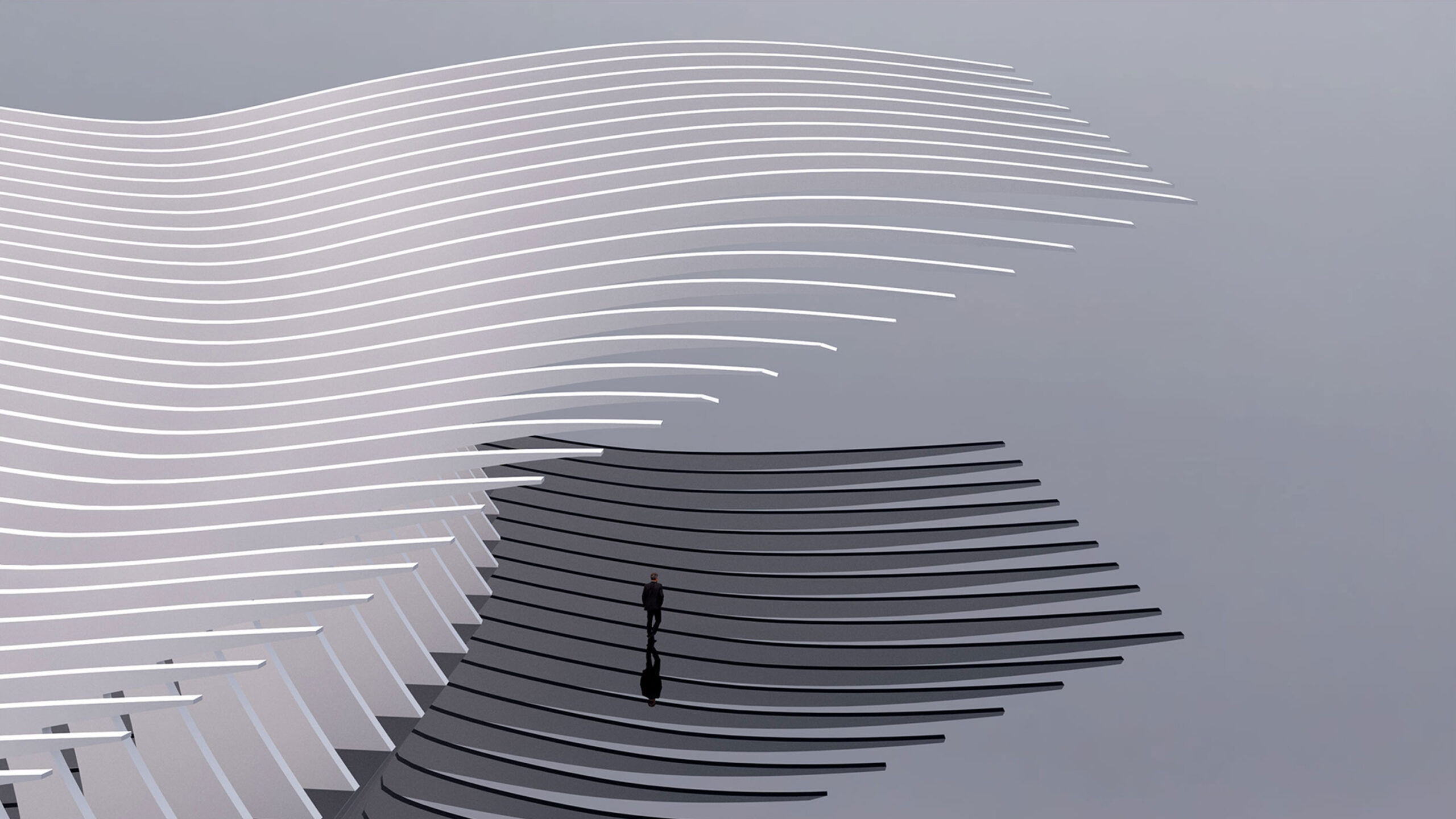
OVERVIEW
Divide & Connect The cross >< over is a revitalization study that explores the concept of division and connection, an interplay of two contrasting forces where elements equally separate and unite.
In observance of everyday environments, I came to appreciate this duality in something as simple as a kitchen island. Its physical presence serves to orient the delineation between adjoining spaces. Simultaneously, it becomes a focal point, drawing inhabitants together as they engage in various activities—from meal preparation to socializing—bridging the gap between realms and framing the respective spatial functions.
Pivotal Revitalization Located on the mouth of the Thames River in the city of New London, CT, the project’s main purpose is to connect the community to the waterfront and reinvigorate the local economy. Numerous smaller initiatives have attempted to breathe new life into the city landscape, however the cross >< over employs an ambitious approach to achieve a more iconic, meaningful, and enduring solution for the community.
Amtrak Dividing Line Running parallel to the coastline, the railway tracks act as a barrier for the local community, severing direct access between the downtown district and the waterfront. The severity of the environment is uninviting and disrupts the natural flow of pedestrian traffic. Still, the railway dividing the local community also facilitates the connection of distant travelers, linking New London to major cities like New York and Boston. In an effort to dissolve this dividing line while reinvigorating the community, the project creates an inviting environment to promote spatial and social engagement.
Compliment the Past In order to seamlessly integrate this project into the community’s historic infrastructure, it was important to respect the city’s heritage while recognizing a change was needed.
CONCEPT
Seafaring Heritage In the mid–19th century, New London was the second largest whaling capital in the world. Whale oil—primarily used as lamp oil—generated millions of dollars worth of revenue, consequently shaping the economy and fueling the development and meteoric rise of the city. At the turn of the century, however, the discovery of cheaper alternatives led to the eventual collapse of the city’s prosperity, and has since never recovered.
Conceptual Inspiration The cross >< over’s core theme pays homage to the city’s whaling history. The architectural landmark is envisioned as an abstract, skeletal, whale-like structure washed ashore. Its modern form juxtaposes Union Station, designed by Henry Hobson Richardson and built in 1848.